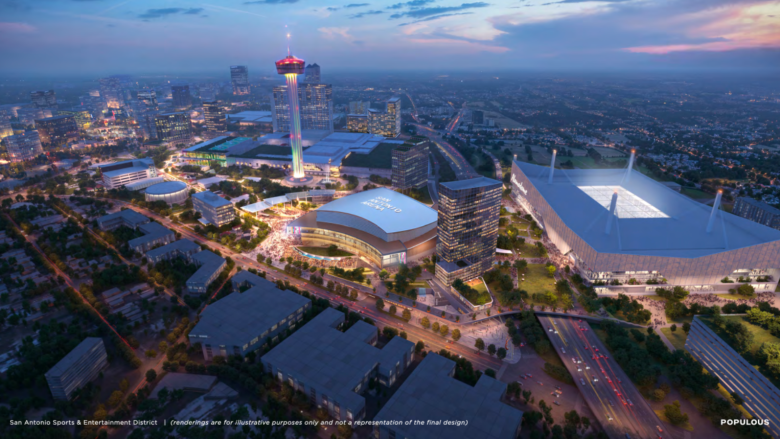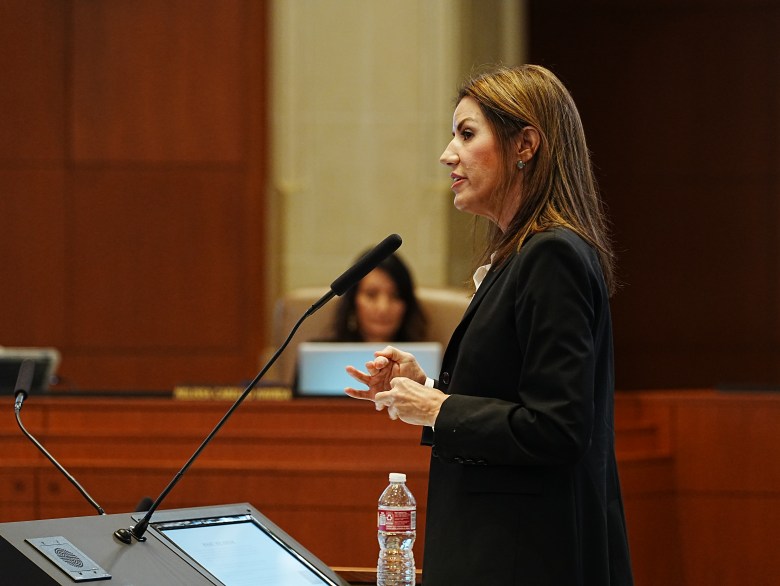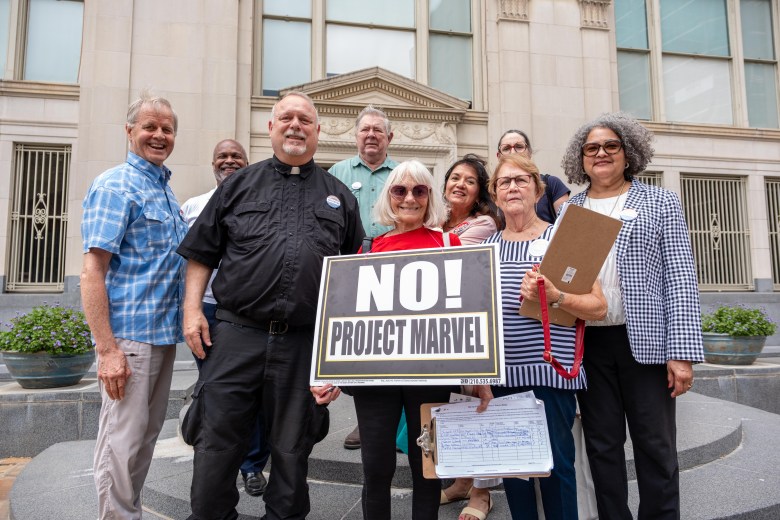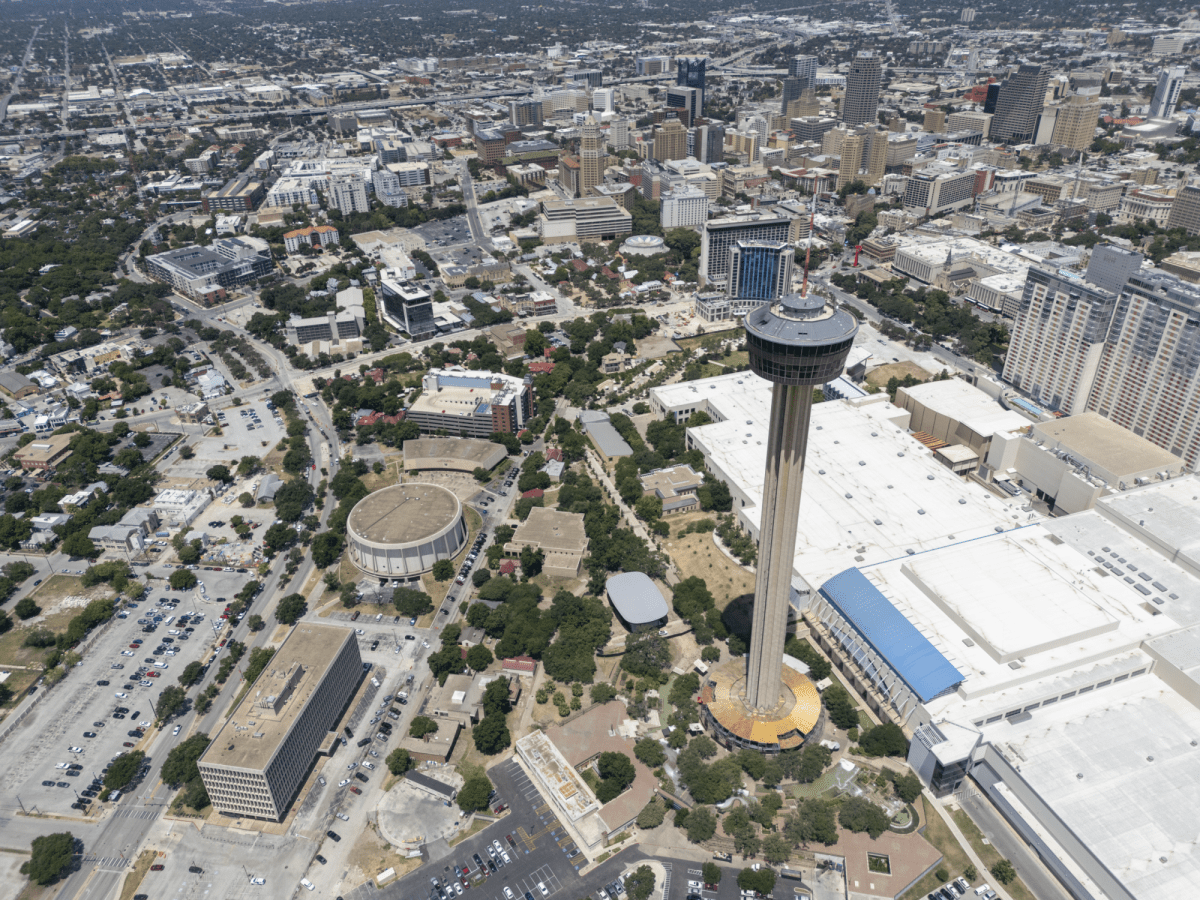The San Antonio Spurs have put more than $1 billion on the table for Project Marvel and a new downtown arena.
Bexar County must send a proposed venue tax increase to help fund the project to voters by Aug. 18.
San Antonio City Council will decide whether or not to put up money for a new downtown basketball arena on Aug. 21.
It’s crunch time for funding the $1.5 billion downtown arena that is part of a proposed San Antonio Sports and Entertainment District that would stretch from Hemisfair to the Alamodome, widely known as Project Marvel.
It would include a $750 million expansion of the convention center and $100 million in improvements to the Alamodome, as well as a new hotel and performing arts venue.
Assistant City Manager Lori Houston, who has managed the planning process for the city, said the city’s planned updates to the Hemisfair area would happen regardless of a new Spurs arena and would help San Antonio attract events in the future.
Right now, though, all eyes are on the arena.
The Spurs, who have played at the Eastside arena now called the Frost Bank Center since 2002, are going to move with their lease set to end in 2032, Houston said.
Specifics of negotiations between the city, county and Spurs have made their way into the public eye this month after early community concerns about transparency and a round of public engagement sessions about the project were hosted across the city.
Now, after years of speculation, officials have laid out a timeline that could see an agreement for how to fund the arena finalized this month.
What’s on the ballot?
Bexar County put its numbers on the table earlier this year, discussing providing $175 million to the arena project through an increase in a venue tax. That increase would also provide $78 million for improvements to the Frost Bank Center and hundreds of millions for improvements to San Antonio Stock Show and Rodeo operations around the Freeman Coliseum.
While it is called a venue tax, the tax revenue itself comes from car rentals and local hotel bills in Bexar County. However, the money can only be used for venues, convention centers and, in certain cases, watershed projects, according to state law.
The increase in the venue tax would also be the only chance for voters to directly make a decision on funding for the new arena.
 A rendering of the San Antonio Sports and Entertainment District. Credit: Courtesy / Populous
A rendering of the San Antonio Sports and Entertainment District. Credit: Courtesy / Populous
Bexar County officials must decide whether to put that tax increase on the November ballot by Aug. 18. If they do, Bexar County residents would get to vote on the tax increase on Nov. 4.
Houston said that vote will be critical.
“The Bexar County venue tax is very important to the funding for the arena. The arena project cannot move forward without the funding,” she said.
If voters approve the change, the county would collect around $120 million more in venue tax revenue over the next 30 years.
City funding won’t require a vote
San Antonio City Council members will ultimately control how the city’s portion of the funding is used.
City Manager Erik Walsh presented a proposal for using $350 million to $500 million in city funding for the new arena. That money would come from leases for the arena and private development in the Project Marvel area, as well as future city property taxes and future state hotel taxes.
The city would put up the money up front, using a municipal bond backed by those funding sources, Houston said — none of which require a vote besides by council.
“That way we can issue debt and we know the money is going to be there,” she said. “It will be serviced by the Spurs lease, the property taxes and the ground leases from development.”
 Assistant City Manager Lori Houston briefs City Council on the development of a Sports and Entertainment District downtown in November. Credit: Brenda Bazán / San Antonio Report
Assistant City Manager Lori Houston briefs City Council on the development of a Sports and Entertainment District downtown in November. Credit: Brenda Bazán / San Antonio Report
Essentially, the city would borrow money to help pay for the arena. It would then repay that money using future revenues from renting out the arena and the land around it and from the increase in tax revenue from the site.
Because the city is borrowing against existing funding sources, not creating new ones, there does not need to be voter approval, Houston explained.
“Those are things that don’t require a vote because they’re already established funding sources,” she said.
Several new council members and Mayor Gina Ortiz Jones, who were all elected in June, laid out their starting positions at their July 25 meeting, suggesting that they needed more information before agreeing to the funding plan.
Jones was one of several elected officials to ask for more from the Spurs, and asked about revenue-sharing from the Spurs’ profits. Other council members were split between concern about the investment of public funds in the project and a more open approach to splitting the bill with the Spurs.
A special session that was planned for Thursday to discuss the new arena was canceled, and the item is on City Council’s agenda for next week on Wednesday.
The Spurs position
The Spurs owner Peter J. Holt released an initial offer in a letter to city officials July 24.
The team offered up $500 million to directly fund the arena and cover cost overruns, plus a guaranteed $500 million for surrounding development and another $60 million for various community incentives.
City Council members are likely to debate those community incentives as part of a community benefits agreement. However, it’s unclear how much negotiating space there is in the Spurs’ proposal: the team hasn’t commented outside of Holt’s letter.
 Peter Holt Jr. and the Coyote celebrate as the Frost Bank Center’s new name is announced in 2023. Credit: Scott Ball / San Antonio Report
Peter Holt Jr. and the Coyote celebrate as the Frost Bank Center’s new name is announced in 2023. Credit: Scott Ball / San Antonio Report
The $500 million for surrounding development would guarantee more building around the stadium. After that land is developed, money from leases and property taxes would help the city pay off its construction expenses.
Houston said that money is critical, since it helps the city guarantee that it will have future revenues to service any debt it takes on when it borrows for its portion of the arena fund.
An economic impact analysis released by the city on Wednesday indicated that the mixed-use area that would be developed around the arena would generate more than $100 million in tax revenue for the city over 30 years, compared to around $50 million without the arena. That does not count other proposed improvements in the Project Marvel area, including to the Alamodome and Convention Center, which would be paid for separately.
The report did not include estimated revenues from leases or tax revenue from the arena itself, but did estimate that the new arena would generate $225 million more in annual spending than the current Frost Bank Center.
Opposition from activists
So far, the community’s reception has been mixed.
Public commenters at the City Council’s July 25 meeting called for more community engagement and asked that local governments not spend money on private development.
COPS/Metro, a coalition of local churches and community organizations, is standing on that particular point. Its members would rather see public money spent more widely on infrastructure needs across the city, they say.
“We do not want to see our tax dollars used on private development. We support private development that lifts up the people of San Antonio,” said Father Jimmy Drennan, a Catholic pastor and one of COPS/Metro’s leaders. “We are seriously concerned about the use of public funds.”
 COPS/Metro Alliance members pose for a photo outside the San Antonio Municipal Plaza Building after a special session on the downtown Spurs arena project July 25. Credit: Amber Esparza for the San Antonio Report
COPS/Metro Alliance members pose for a photo outside the San Antonio Municipal Plaza Building after a special session on the downtown Spurs arena project July 25. Credit: Amber Esparza for the San Antonio Report
While the group’s leaders say they support the Spurs, they just want the team to foot more of the bill, Drennan added.
Rena Oden, another COPS/Metro leader, said funding should be spread out across the city to address infrastructure needs in multiple neighborhoods, not just downtown.
In response, city officials have said that the funding they are raising can only be used in this specific area or will only materialize if the new sports and entertainment district does.
For example, revenues from leases to the arena and surrounding areas will only be available if the arena actually gets built. The state and city tax dollars that would come into play also have to be used within a specific geographic area around the convention center.
At a press conference on Friday, COPS/Metro asked for a new economic impact analysis that examined the risks associated with public funding for a new arena — and said they are planning to campaign against the county’s venue tax increase.
